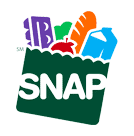In today’s digital age, smartphones play a huge role in human lives. The use of smartphones in daily life is almost constant. How did smartphones change our lives? Particularly in the times of a global pandemic, people are using smartphones and other mobile devices more than ever—work, school, and social networking all take place online the majority of the time.
Let’s take a look at the significant role of smartphones in everyday life. Odds are, they play an even larger role in our everyday lives than we may realize.
The role of smartphones in the workplace
Since spring, when countries across the globe went into quarantine, an unprecedented number of people in the workforce have been working remotely, usually from a home office.
- In-person staff and client meetings are mostly taking place virtually, using smartphones, tablets, or laptops for connectivity and collaboration across a number of industries—the vast majority, in fact.
- In addition to meeting with coworkers and/or clients via video-conferencing platforms, smartphones are now pivotal in scheduling, communication, data tracking, and more. Even the medical industry utilizes mobile devices in charting and storing patient information.
- Smartphone use in the workplace also plays an important role in increasing efficiency and productivity, maximizing effective work and communication time while cutting out lag time usually incurred with a daily commute.
- The ability to connect instantly without commuting to and from meetings is another added bonus, particularly for businesses or corporations with multiple locations or branches.
The role of smartphones in education
It’s no secret that the landscape of education has changed drastically since COVID-19 entered our daily lives.
- From elementary-aged children to higher-education students, virtual learning has reshaped the way people are teaching and learning.
- Younger students have had to adapt to utilizing smartphones and other mobile devices more than ever, adding the need for more advanced technological devices and skill development. Online classes and lessons have replaced in-person learning across the globe on a grand scale.
- Some schools are currently functioning in a hybrid model, with virtual students streaming live into classrooms with their in-person counterparts. This has increased the need for improved communication skills, both written and oral.
- While many have reported struggling with virtual learning, a large number of students and parents have praised the solution, noting more flexibility and compatibility with non-traditional learning styles.
- Education experts also tout the increased efficiency in being able to teach and learn remotely, although this is a problem where internet service and/or providers are spotty and unreliable on a consistent basis. More rural areas have struggled with internet issues on a greater scale than those in urban areas.

Smartphones and social distancing
Although sitting in front of a screen all day isn’t necessarily the answer for anyone’s overall health, the ability to connect with others outside of your own personal home is very valuable—even crucial—to the average person’s emotional health and stability.
- Facing quarantine for weeks and months—possibly even a year or more—and not having access to the normalcy of an everyday routine can wreak havoc on one’s state of mind.
- Anxiety and depression statistics have increased considerably since the onslaught of the pandemic, according to numerous studies and research findings.
- While some people are fortunate enough to live with family members, there remains a large portion of the population who live alone, or are elderly and without family or friends who live close enough to check in on them, or just to provide social support and interaction.
- Life has undoubtedly been very isolating and difficult for everyone during these unprecedented times during the pandemic, and even more so for those who live alone or in isolated areas.
- The availability and accessibility of smartphones can make a huge difference in these peoples’ lives.
- Thankfully, being able to connect to friends, family, colleagues, and peers virtually has been a lifesaver for many people.
- Connecting socially is such an important part of life, even if it is limited to screen time.
What about people who are unable to access or afford smartphones or other digital devices? How are economically disadvantaged citizens supposed to connect on a social level (not to mention for work and/or school purposes) without the ability to incorporate them into their limited budget?
Assist Wireless and the Federal Lifeline Program are here to help those in need score free and low-cost smartphones.
- What is Assist Wireless?
- What about the Federal Lifeline Assistance Program?
We have all of the details you need to know.
Read on for more details on this amazing opportunity.
Get a free smartphone with the Lifeline Assistance Program
Are you in need of a free smartphone? Consider Assist Wireless smartphones, available through the Federal Lifeline Assistance Program.
Assist Wireless is the #1 Oklahoma Lifeline provider. They have over 30 retail locations in Oklahoma and offer free government phone service in Arkansas, Maryland, and Missouri.
You can get a free or low-cost smartphone from Assist Wireless without any worries.* Free Lifeline phones and wireless plans provide low-income consumers and/or Veterans with free or low-cost smartphones and talk/text/data plans.
If you or your household fall into a particular low-income bracket or are a recipient of programs like Medicare, Supplemental Nutrition Assistance Program (SNAP), Supplemental Security Income (SSI), Veterans Pension or Survivor’s Pension Benefits, and more, you can qualify.
Assist Wireless even offers a “BYOD” plan. The “bring your own device” promotion lets you bring your current smartphone over to be activated through a Lifeline plan (as long as it is compatible). With Assist Wireless, if you run out of minutes or texts, you can quickly and easily “refill “your account.
This awesome company even offers account credits and perks for tons of occasions. You can call, live chat, email, or visit a store to speak with a customer service representative in-person with any questions or concerns.
Free smartphones?! Sign up today! Head on over to https://www.assistwireless.com/ for all the information you need on applying and getting your new phone shipped to you before you know it.







